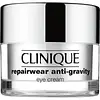What's inside
What's inside
 Key Ingredients
Key Ingredients

 Benefits
Benefits

 Concerns
Concerns

 Ingredients Side-by-side
Ingredients Side-by-side

Benzoyl Peroxide 2.5%
Water
Skin ConditioningCetearyl Alcohol
EmollientPetrolatum
EmollientPropylene Glycol
HumectantBenzyl Alcohol
PerfumingPotassium Cetyl Phosphate
EmulsifyingSteareth-2
EmulsifyingAcrylates/C10-30 Alkyl Acrylate Crosspolymer
Emulsion StabilisingPanthenol
Skin ConditioningAllantoin
Skin ConditioningXanthan Gum
EmulsifyingDimethicone
EmollientGlyceryl Stearate
EmollientPEG-100 Stearate
Cyclotetrasiloxane
EmollientCyclopentasiloxane
EmollientEthoxydiglycol
HumectantParfum
MaskingBenzoyl Peroxide 2.5%, Water, Cetearyl Alcohol, Petrolatum, Propylene Glycol, Benzyl Alcohol, Potassium Cetyl Phosphate, Steareth-2, Acrylates/C10-30 Alkyl Acrylate Crosspolymer, Panthenol, Allantoin, Xanthan Gum, Dimethicone, Glyceryl Stearate, PEG-100 Stearate, Cyclotetrasiloxane, Cyclopentasiloxane, Ethoxydiglycol, Parfum
Water
Skin ConditioningButyrospermum Parkii Butter
Skin ConditioningCetearyl Alcohol
EmollientButylene Glycol
HumectantHydrogenated Polyisobutene
EmollientPhenyl Trimethicone
Skin ConditioningPolyglyceryl-3 Beeswax
EmulsifyingPolybutene
Sucrose
HumectantPolymethyl Methacrylate
Cetyl Esters
EmollientIsostearyl Neopentanoate
EmollientGlycerin
HumectantCetearyl Glucoside
EmulsifyingLactis Proteinum
Skin ConditioningSigesbeckia Orientalis Extract
Skin ConditioningCamellia Sinensis Leaf Extract
AntimicrobialHordeum Vulgare Extract
EmollientTriticum Vulgare Germ Extract
Skin ConditioningChlorella Vulgaris Extract
Skin ConditioningYeast Extract
Skin ConditioningLinoleic Acid
CleansingCholesterol
EmollientCaffeine
Skin ConditioningPalmitoyl Oligopeptide
CleansingSqualane
EmollientPhytosphingosine
Skin ConditioningSodium Hyaluronate
HumectantDimethicone
EmollientCaprylyl Glycol
EmollientPEG-8
HumectantMethyl Glucose Sesquistearate
EmollientPolysilicone-11
Glyceryl Polymethacrylate
PEG-100 Stearate
Tocopheryl Acetate
AntioxidantStearic Acid
Cleansing1,2-Hexanediol
Skin ConditioningAcrylates/C10-30 Alkyl Acrylate Crosspolymer
Emulsion StabilisingSodium Dehydroacetate
PreservativeTetrahexyldecyl Ascorbate
AntioxidantAminomethyl Propanol
BufferingPotassium Sulfate
Phenoxyethanol
PreservativeDisodium EDTA
CI 77891
Cosmetic ColorantMica
Cosmetic ColorantWater, Butyrospermum Parkii Butter, Cetearyl Alcohol, Butylene Glycol, Hydrogenated Polyisobutene, Phenyl Trimethicone, Polyglyceryl-3 Beeswax, Polybutene, Sucrose, Polymethyl Methacrylate, Cetyl Esters, Isostearyl Neopentanoate, Glycerin, Cetearyl Glucoside, Lactis Proteinum, Sigesbeckia Orientalis Extract, Camellia Sinensis Leaf Extract, Hordeum Vulgare Extract, Triticum Vulgare Germ Extract, Chlorella Vulgaris Extract, Yeast Extract, Linoleic Acid, Cholesterol, Caffeine, Palmitoyl Oligopeptide, Squalane, Phytosphingosine, Sodium Hyaluronate, Dimethicone, Caprylyl Glycol, PEG-8, Methyl Glucose Sesquistearate, Polysilicone-11, Glyceryl Polymethacrylate, PEG-100 Stearate, Tocopheryl Acetate, Stearic Acid, 1,2-Hexanediol, Acrylates/C10-30 Alkyl Acrylate Crosspolymer, Sodium Dehydroacetate, Tetrahexyldecyl Ascorbate, Aminomethyl Propanol, Potassium Sulfate, Phenoxyethanol, Disodium EDTA, CI 77891, Mica
 Reviews
Reviews

Ingredients Explained
These ingredients are found in both products.
Ingredients higher up in an ingredient list are typically present in a larger amount.
Acrylates/C10-30 Alkyl Acrylate Crosspolymer is a synthetic polymer. It is used to thicken and improve the texture of products. Due to its properties, it can prevent water and oil ingredients from separating.
Cetearyl alcohol is a mixture of two fatty alcohols: cetyl alcohol and stearyl alcohol. It is mainly used as an emulsifier. Emulsifiers help prevent the separation of oils and products. Due to its composition, it can also be used to thicken a product or help create foam.
Cetearyl alcohol is an emollient. Emollients help soothe and hydrate the skin by trapping moisture.
Studies show Cetearyl alcohol is non-toxic and non-irritating. The FDA allows products labeled "alcohol-free" to have fatty alcohols.
This ingredient is usually derived from plant oils such as palm, vegetable, or coconut oils. There is debate on whether this ingredient will cause acne.
Due to the fatty acid base, this ingredient may not be Malassezia folliculitis safe.
Learn more about Cetearyl AlcoholDimethicone is a type of synthetic silicone created from natural materials such as quartz.
What it does:
Dimethicone comes in different viscosities:
Depending on the viscosity, dimethicone has different properties.
Ingredients lists don't always show which type is used, so we recommend reaching out to the brand if you have questions about the viscosity.
This ingredient is unlikely to cause irritation because it does not get absorbed into skin. However, people with silicone allergies should be careful about using this ingredient.
Note: Dimethicone may contribute to pilling. This is because it is not oil or water soluble, so pilling may occur when layered with products. When mixed with heavy oils in a formula, the outcome is also quite greasy.
Learn more about DimethiconePeg-100 Stearate is an emollient and emulsifier. As an emollient, it helps keep skin soft by trapping moisture in. On the other hand, emulsifiers help prevent oil and water from separating in a product.
PEGS are a hydrophilic polyether compound . There are 100 ethylene oxide monomers in Peg-100 Stearate. Peg-100 Stearate is polyethylene glycol ester of stearic acid.
Water. It's the most common cosmetic ingredient of all. You'll usually see it at the top of ingredient lists, meaning that it makes up the largest part of the product.
So why is it so popular? Water most often acts as a solvent - this means that it helps dissolve other ingredients into the formulation.
You'll also recognize water as that liquid we all need to stay alive. If you see this, drink a glass of water. Stay hydrated!
Learn more about Water